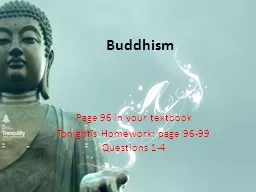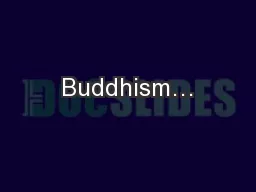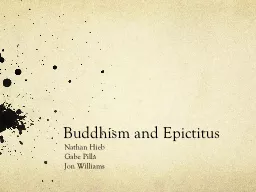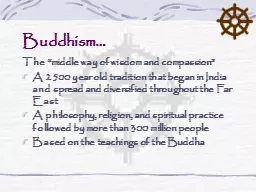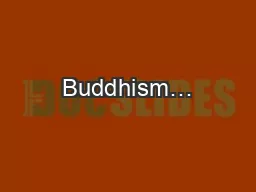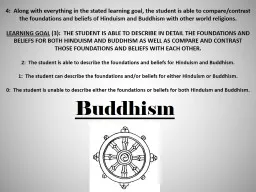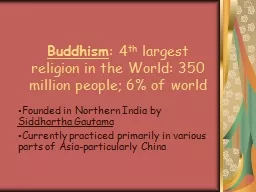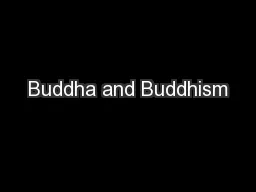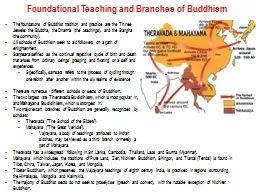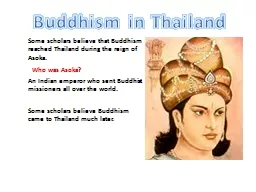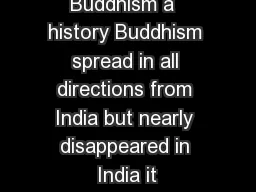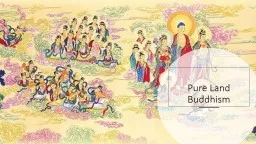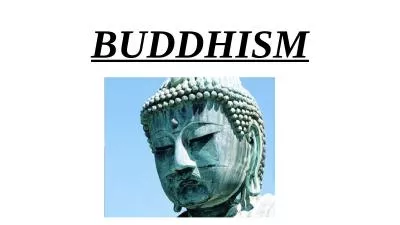PPT-Buddhism Page 96 in your textbook
Author : mitsue-stanley | Published Date : 2018-03-13
Tonights Homework page 9699 Questions 14 Origins of Buddhism In the 6 th century BC a new religion called Buddhism appeared in northern India and soon became the
Presentation Embed Code
Download Presentation
Download Presentation The PPT/PDF document "Buddhism Page 96 in your textbook" is the property of its rightful owner. Permission is granted to download and print the materials on this website for personal, non-commercial use only, and to display it on your personal computer provided you do not modify the materials and that you retain all copyright notices contained in the materials. By downloading content from our website, you accept the terms of this agreement.
Buddhism Page 96 in your textbook: Transcript
Download Rules Of Document
"Buddhism Page 96 in your textbook"The content belongs to its owner. You may download and print it for personal use, without modification, and keep all copyright notices. By downloading, you agree to these terms.
Related Documents

